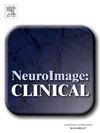Disrupted third visual pathway function in schizophrenia: Evidence from real and implied motion processing
Abstract
Impaired motion perception in schizophrenia has been associated with deficits in social-cognitive processes and with reduced activation of visual sensory regions, including the middle temporal area (MT+) and posterior superior temporal sulcus (pSTS). These findings are consistent with the recent proposal of the existence of a specific ‘third visual pathway’ specialized for social perception in which motion is a fundamental component. The third visual pathway transmits visual information from early sensory visual processing areas to the STS, with MT+ acting as a critical intermediary. We used functional magnetic resonance imaging to investigate functioning of this pathway during processing of naturalistic videos with explicit (real) motion and static images with implied motion cues. These measures were related to face emotion recognition and motion-perception, as measured behaviorally. Participants were 28 individuals with schizophrenia (Sz) and 20 neurotypical controls. Compared to controls, individuals with Sz showed reduced activation of third visual pathway regions (MT+, pSTS) in response to both real- and implied-motion stimuli. Dysfunction of early visual cortex and pulvinar were also associated with aberrant real-motion processing. Implied-motion stimuli additionally engaged a wide network of brain areas including parietal, motor and frontal nodes of the human mirror neuron system. The findings support concepts of MT+ as a mediator between visual sensory areas and higher-order brain and argue for greater focus on MT+ contributions to social-cognitive processing, in addition to its well-documented role in visual motion processing.

 求助内容:
求助内容: 应助结果提醒方式:
应助结果提醒方式:


